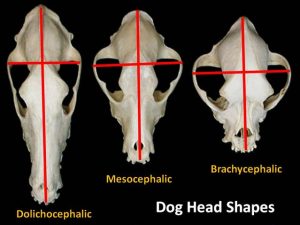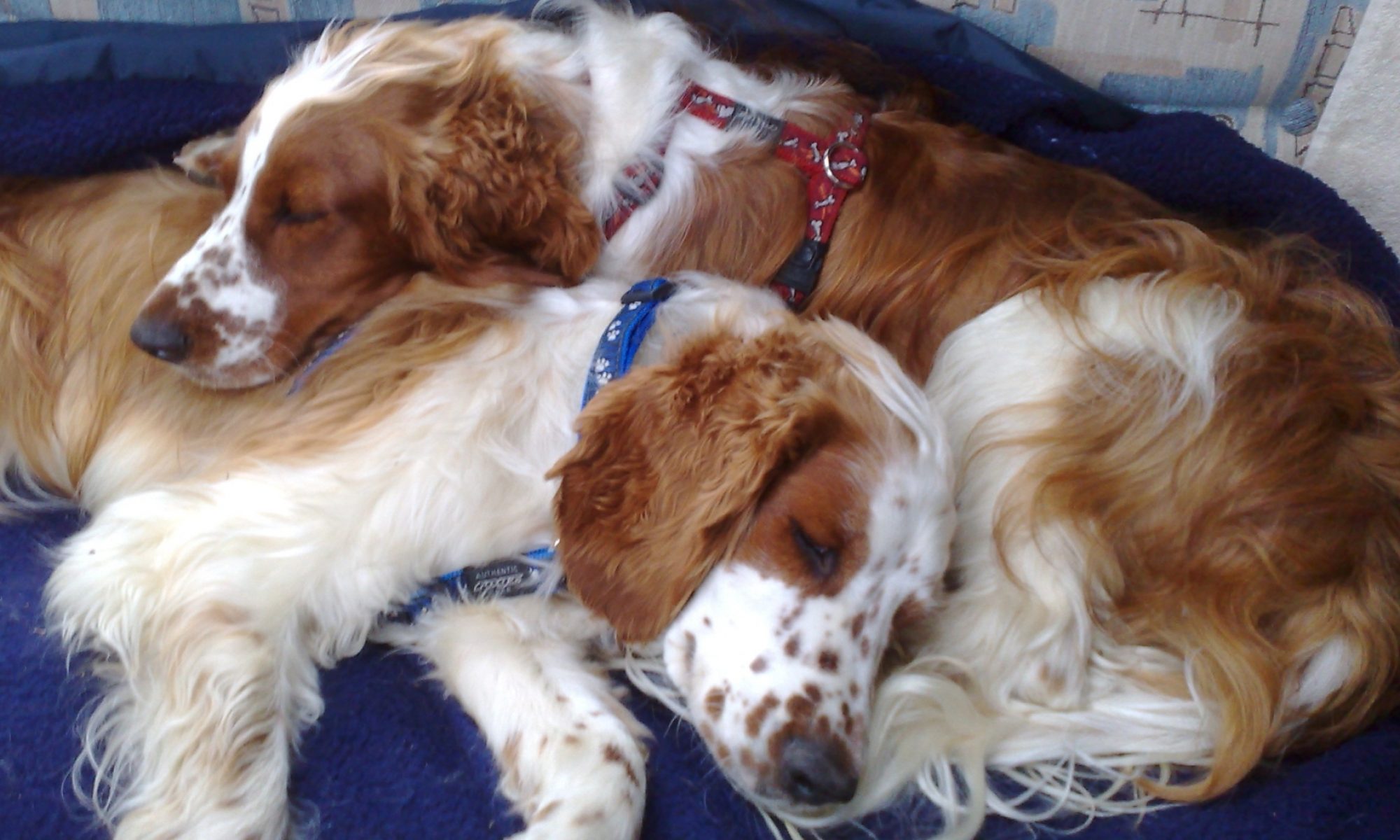The Three Dog Head Shapes

The three head shapes dogs can have are:
Dolichocephalic – these heads are long and narrow, such as a Whippet, Rough Collie, Borzoi, German Shepherd, Great Dane and Poodle
Mesocephalic – these heads are more moderate, and have a broader back skull than muzzle. Examples of dogs with this head are the Dalmatian, Norwegian Elkhound, Beagle, Belgian Malinois, Border Collie, English Springer Spaniel and Yorkshire Terrier.
Brachycephalic – these heads have wide skulls with shortened muzzles. The dogs often have wrinkled skin over the muzzle, protruding eyes, and an undershot jaw. Examples are the Bulldog, Pug, Pekinese, Boxer, Cavalier King Charles Spaniel and Tibetan Spaniel.
By calculating the ‘Cephalic Index’ the dog’s head shape can be determined technically. This involves measuring the skull at the widest part, multiplying by 100 and then dividing the result by the maximum length of the skull. Smaller values are associated with dolichocephalic dogs, larger values indicate brachycephalic dogs.
Some personality differences have been noted.
Brachycephalic dogs seem to be more engaged with their owners with a higher interest in human-directed play, and more defensive when faced with a difficult to interpret situation (such as seeing a person dressed like a ghost).
Dolichocephalic dogs seem to be less likely to engage in object play, especially with unfamiliar humans, but they are not as easily startled and recover more quickly when an unexpected event occurred.
